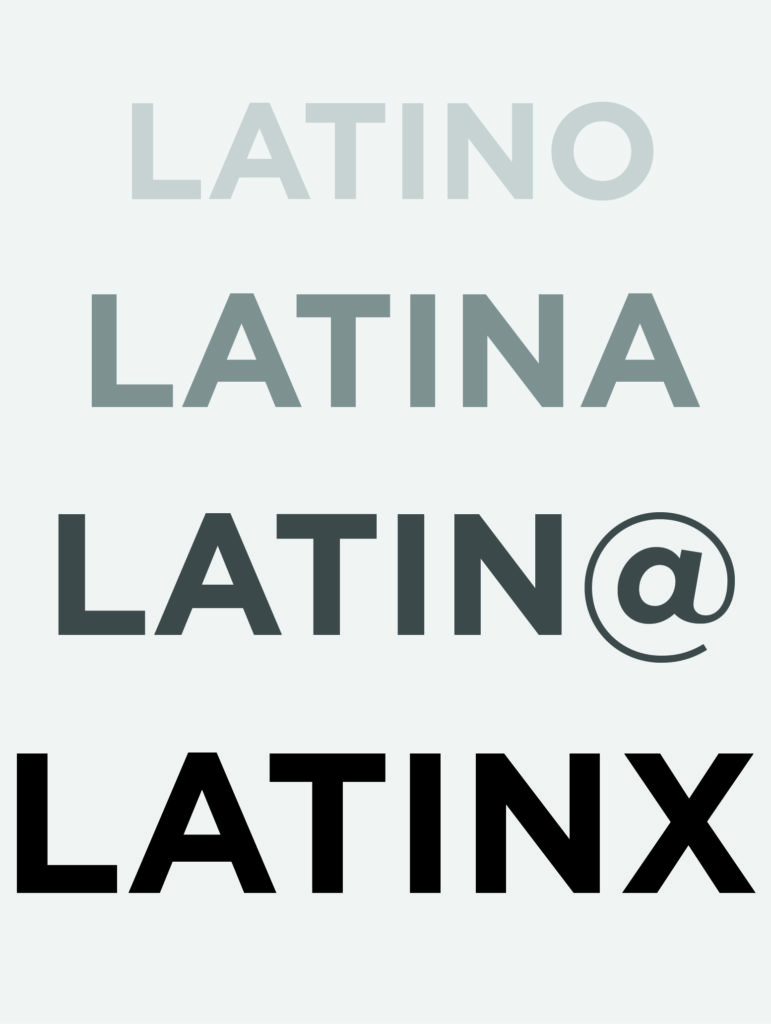Chicanx, not Chicano or Chican@. Latinx, not Latino or Latin@.
Activists have included an “x” in Spanish gendered nouns to include individuals who use gender neutral pronouns and individuals who do not identify within the gender binary.
Although the phrase is used most often in activist literature, lately it has been gaining attention in more mainstream conversations. Two organizations on campus have changed their name to include the equis—the x—the Latinx Law Student Association and Movimiento Estudiantil Chicanx de Aztlán (MEChA).
In Spanish, the last syllable in most nouns indicate the gender: feminine or masculine. For example, mesa, which means table, would be considered feminine because it ends with an a, whereas perro, dog, would be considered masculine because it ends with an o.
Following this Spanish lesson, the word “Latino” would itself be considered masculine. So, if we were speaking to those who identify with she, her and hers pronouns, or they and them pronouns, they would be referred to as Latinos regardless. Only when the room is full of women would Latina, with the feminine a, be used.
“MEChA uses the ‘x’ in all the gendered words referring to a general group of people and uses ‘o’ and ‘a’ in respect to people’s pronouns,” said Dominique Friz, a sophomore at Seattle University and member of MEChA. “When referring to a group of Chicanos we say Chicanx, when referring to a specific person who identifies using she/her pronouns we refer to them as Chicana.”
This year, conversations in MEChA have centered around gender, sexuality and the pronouns used in everyday language. Members of MEChA are mindful of the gendered pronouns that are often attached to the Spanish language. It is for this reason that members are now using Chicanx instead of Chicano in Movimiento Estudiantil Chicanx de Aztlán.
When Jerri Melendez, president of the Latinx Law Student Association at Seattle University, began his first year at the Seattle U School of Law in 2015, the association was still called the Latino Law Student Association.
At the first general meeting of Melendez’s first month of law school, the association proposed the change of the spelling of the word.Insteadof “Latino” they voted on changing it to “Latinx.”
Although Melendez doesn’t recall the exact reasons the name was changed, he assumes it’s because of the inclusiveness that comes with the “x” in Latinx.
“The point was to not make anyone feel out, Melendez said. “We [Latinx students] have to stick together because there’s not too many of us.”
Melendez moved to Seattle from Houston, Texas. Because there’s such a small Latinx population in Seattle, he feels like those who identify as Latinx need to stick together. If using the “x” in Latinx includes all gender identifications, he’s an advocate.
For Alex Romero, Secretary of the Latinx Law Student Association at Seattle U, using the term caused some confusion. Romero appreciates that the “x” in Latinx is inclusive of non-binary people, but once he read articles he realized there is opposition to the use.
“It seemed attractive to me. It was inclusive of everyone else and it was what a lot of groups that I align myself with were doing, it was within their agenda,” Romero said. “So it was second nature for me to just accept it and never second guess it.”
In the articles Romero read, it has been argued that the use of the “x” in the Spanish language indicated a very American perspective. Though Friz has heard this argument, she strongly supports the usage of the term and encourages others to use it as well.
“I read an article that talked about how ‘x’ is disrespectful and contributing to the erasure of Spanish,”Frizsaid.“But I will say that I am less interested in preserving a gendered and colonial language and more interested in building solidarity across intersections of identity.”
Before the “x,” we saw the “at” sign make an appearance. The “at” sign, @, is used when speaking to or about men and women. Activists began to use the “at” sign to advance gender equality and gender neutrality. The problem with the “at” sign was that those who don’t identify within the gender binary were excluded.
Using Latinx instead of Latino or Latin@ blends both cultural and gender identifications, whereas Latino was limited to simply a cultural identification.
Whether the use of the “x” will hit mainstream worldwide is still unsure.
But Melendez thinks it can and will hit mainstream across the American public after people notice the heavy usage of the word on social media.
Romero remains skeptical.
“The only people really using it are the people in high academic spaces,” Romero said. “If it’s already this controversial at this point, I don’t think it’ll be second nature for a lot of different people.”
Yesenia may be reached at
[email protected]













